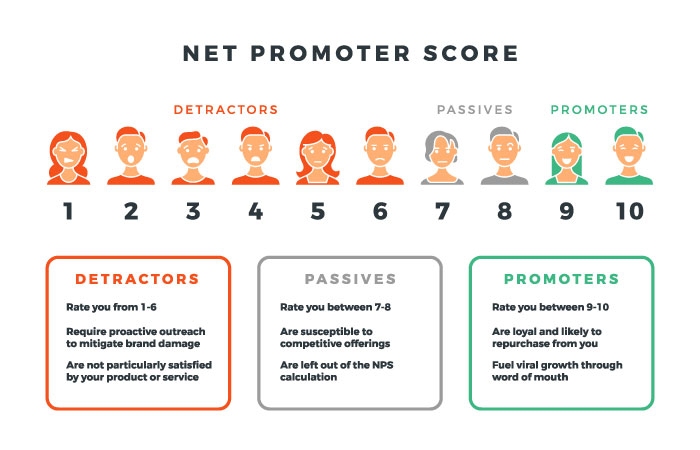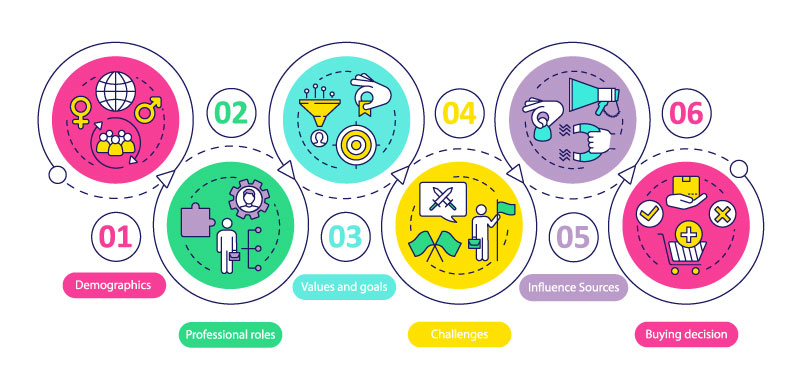When designing a marketing campaign, who helps you build your messaging, determines what content you create, and figures out what channels to market on?
Is it your marketing team? Your sales staff? Your intuition?
If the answer doesn’t include your customers, you could be missing out on a key component of an optimized marketing strategy.
Using customer feedback can help you improve your marketing almost overnight. This, in turn, allows you to reduce the amount of money you have to spend to reach your audience while simultaneously increasing conversions.
In this guide, we will help you understand why customer feedback is important to your marketing strategy, how you can gather this information, and, finally, how you can funnel this data into your marketing plan.
Why Customer Feedback is Important to Marketing
After every interaction with your business, a customer walks away with an opinion about the service that was received and a viewpoint of your brand.
This feedback can be negative, positive, or even neutral.
And, within this feedback lies a wealth of information. Your customers understand better than anyone on your marketing team or in your C-suite exactly what your brand is doing right — and what it is doing wrong. They have insight into what is going well and what is going poorly.
And, they know exactly what would make them happier, more loyal, and more inclined to spend additional money with your business.
When it comes to marketing, this information is gold. It allows you to create highly targeted campaigns, tackle complaints with your brand head-on, and build a better relationship with your existing clients.
Using customer feedback to your advantage can give you a valuable boost ahead of your competition. After all, nothing makes a customer feel better than being heard.
But to gain all the power of your customers’ feedback, you have to start by creating a standardized method for gathering their thoughts.
Creating a Standardized Method for Gathering Feedback
You can gather feedback from your customers in many ways. Which method is right for you will have a lot to do with your goal.
One standard way to gather customer feedback is through the Net Promoter Score. This score is calculated by asking your customers one key question:
“How likely is it that you would recommend [brand] to a friend or colleague?”
Customers respond on a 0-to-10 scale, and the numbers are used to calculate your Net Promoter Score.
- Scores 9-10 are considered promoters. These are loyal customers who will keep purchasing from you and telling others about your brand or products. They are the fuel behind your growth.
- Scores 7-8 are considered passives. They are customers who are satisfied with your brand, but they aren’t out there promoting your products to others. They are also customers who could be easier to convert to a competitor’s brand.
- Finally, anyone scoring six or below is considered a detractor. These customers are unhappy and can damage your brand through negative word-of-mouth.
Taking all of these scores, the Net Promoter Score subtracts the percentage of detractors from the percentage of promoters to provide you with a number between -100 and 100.
Your Net Promoter Score is a great place to begin when gathering feedback. It will help you take a quick pulse on your brand. If you find that you are falling on the low end, you might need to focus your marketing efforts on rebranding or tackling concerns with your products or services. If, however, you find that you have a high Net Promoter Score, you can focus on promoting what is going right.

Taking a More Granular Look
Beyond just a broad look at your customer satisfaction, you will also want to look for ways to gather more detailed feedback.
A great way to do this is by conducting a customer survey. Start by determining the goal of your survey. This will help you decide on the right questions to ask.
From here, determine the audience for your survey. It might be a group of customers who recently visited your store, a customer who recently browsed your website, or a customer who hasn’t interacted with your brand in a while.
Finally, you will want to ensure that you have a way to categorize the feedback you receive. This might include tagging feedback based on whether it’s positive, neutral, or negative, or you might break it down by customer demographic. Many customer survey platforms have built-in tagging capabilities, making it easier to aggregate data into a more digestible format.
Once you have organized your feedback into a usable data set, it is time to power your marketing strategy with this feedback.
Funneling Your Findings into Your Marketing Strategy
Using customer feedback for your marketing strategy can take on a few forms. You might use every one of the following tactics, or you might just employ a few. The goal is to get the most out of your feedback, creating a more robust marketing strategy going forward.
Building Detailed Personas
When you build out a marketing strategy, you need to begin with an understanding of who your audience is. If you don’t know whom you are marketing to, it will be challenging to create the right messaging and determine where to reach your audience.
This is where customer feedback can help you immensely. Through the feedback that you gather, you can start to put together detailed personas.
You can build these personas based on:
- Demographic information you gather
- Additional interests of your customers
- Expressed values and wants
The more detailed you can get when building your personas, the better your marketing tactics can be.
For example, say your customer surveys reveal that more than 60% of your customers are males between the ages of 60 and 75. You will use a very different marketing strategy than if your persona winds up being a female aged 20 to 35.

Strategizing the Right Content
After determining your target audience, you can leverage your customer feedback further to create a targeted content strategy.
Use customer feedback to learn the following:
- What information does your audience want?
- What values does your audience express?
- What frustrations did your audience experience with your brand?
With this information, you can then build out a robust content strategy that targets these buckets.
For example, you might discover that your audience wants to understand how vehicle financing options work. With this information, you build a campaign based on a marketing article your team writes explaining how vehicle financing works and inviting customers to reach out to your team with further questions.
Or, you might find out that your audience places a high value on one-on-one customer service interactions. You can use this information to launch a social media ad campaign showcasing your live chat option.
When you use customer feedback to dictate what content your marketing team produces, you can become highly successful at capturing your audience’s attention.
Not only that, but it also takes the guesswork out of content creation for your marketing team. Rather than simply building out generic content, your team can create highly specific content that is an ideal fit for your target audience.
Determining Your Brand Voice
Every brand has its own voice, whether intentional or not. That voice helps dictate the style of your content, the way you interact with customers, and the impression new customers will have of your brand.
What voice is right for your business will depend a lot on your target audience. Customer feedback can help you determine what type of voice resonates with your clients. This can help you readjust if you’re missing the mark.
For example, if your surveys reveal a common theme that your customers don’t find your brand personal enough, you might readjust your marketing strategy to include more personality. You might start by highlighting the people behind your brand and showcasing your employees of the month.
Testing, Testing, and Testing Again
One of the best ways to funnel customer feedback into your marketing tactics is to implement ongoing testing. You can even invite a select group of highly engaged customers to interact with new features, such as a website redesign, an online storefront, or a live chat, and to provide you with feedback.
This allows you to test out new strategies and survey your customers to determine what is working well and what you need to cut.
This is a powerful way to optimize your marketing strategy using information from the people who matter most. Instead of simply guessing about cause and correlation, you can test and measure strategies based on detailed feedback.
Closing the Loop with Customer Service
Finally, too often, businesses wind up siloing their marketing and customer service efforts. This is unfortunate since your marketing team can help create a powerful feedback loop for your customer service team.
For example, through a customer survey, you can categorize all the negative feedback you get, creating a list of clients who were dissatisfied with a recent product or service.
You can then provide this information to your customer service team, who can close the loop by reaching out and trying to make the situation right.
From here, your customer service team can take notes on the interaction with the customer and feed that information right back to the marketing team.
In this way, marketing tactics and customer service strategies can work hand-in-hand to create a system where your customers are always heard, you always respond to their feedback, and you change your marketing strategy accordingly.
Work with J&L Marketing to Improve Your Marketing
Customer feedback is a powerful mechanism for improving your marketing strategy. At J&L Marketing, we can help you learn how to gather customer feedback and then use this information to improve your marketing tactics.
This can, in turn, help you lower your spend while increasing your reach.
If you are interested in learning more about using customer feedback to improve your marketing plan, reach out to our team today. We look forward to helping you outpace the competition by listening to your customers and reaching them with targeted messaging.



